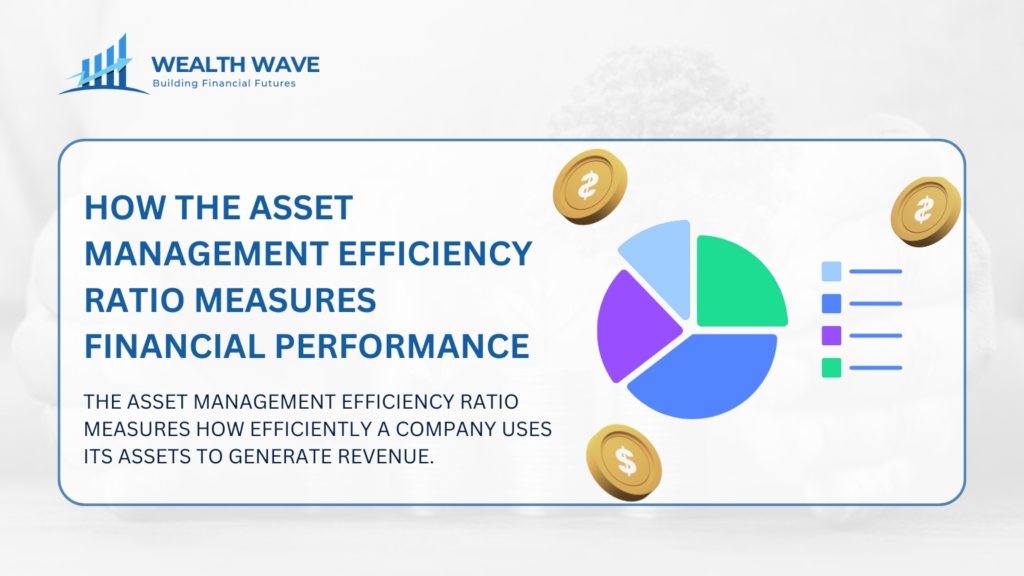
Understanding how effectively your company is utilizing its assets can feel like solving a complex puzzle, especially when sales revenue isn’t meeting your expectations. It’s a challenge many businesses face, and it was during our own journey of seeking answers that we stumbled upon the game-changing concept of asset management efficiency ratios.
Diving into this topic revealed so much more than we anticipated.
This piece aims to guide you through what these ratios are and their significance – touching on everything from improving operational efficiency to maximizing capital utilization. By the time you finish reading, you’ll grasp how to leverage them for enhanced financial analysis, informed investment decision-making, and fine-tuning your business operations to boost income generation.
Ready to elevate your asset efficiency? Let’s dive in.
Key Takeaways
- Asset management ratios are tools that measure how effectively a company uses its assets to generate revenue. They include various metrics like total asset turnover and inventory turnover ratios.
- These ratios not only offer insights into a company’s financial performance but also allow for comparisons across different industries. High efficiency in these ratios indicates effective use of resources and good operational management.
- While asset management ratios provide valuable information for making informed investment decisions and evaluating business performance, they have limitations due to their reliance on historical data and possible insensitivity to current market conditions.
- Strategic application of asset management ratios aids in strategic planning aimed at improving operational efficiency. By assessing how well assets are utilized to produce income, businesses can identify areas for improvement and make more informed choices about resource allocation.
- Understanding and analyzing asset management efficiency ratios play a critical role in enhancing decision-making processes regarding investments, comparison between competitors, or sectors which ultimately contributes towards optimizing profitability.
Understanding Asset Management Ratios

Asset management ratios help us gauge how well a company uses its assets to generate revenue. We can calculate these ratios using various formulas, and they provide essential insights into financial performance.
Definition and Calculation

Asset management ratios, also known as asset turnover ratios or asset efficiency ratios, measure a company’s ability to generate revenues from its assets. We calculate these ratios using specific formulas.
For example, total asset turnover equals sales revenue divided by average total assets. This ratio helps us assess how efficiently our company uses its resources to produce income.
Efficiency ratios show how well we utilize our assets and manage our operations to control expenses. A good efficiency ratio indicates that the company effectively employs its resources for revenue generation.
By analyzing these metrics, we can gain insights into capital productivity and overall financial performance.
How They Work

Efficiency ratios measure how well we manage our assets and liabilities. These ratios show us the ability of our assets to generate income. By using formulas specific to asset management efficiency, we can calculate how effectively we utilize our resources.
For example, total asset turnover indicates how efficiently we turn assets into sales revenue.
We analyze these ratios to uncover insights about our operational efficiency. Managers assess resource utilization through metrics like receivables turnover and capital efficiency.
A strong efficiency ratio signals effective use of our assets in generating income. Weaknesses may indicate areas for improvement in managing operations or controlling expenses.
Types of Asset Management Ratios

Asset management ratios measure how well we use our assets to generate income. We can categorize these ratios into operational efficiency, asset turnover, and inventory management metrics.
Operational Efficiency Ratios
Operational efficiency ratios measure how effectively we use our resources. These metrics help us assess our ability to manage assets and liabilities. By evaluating these ratios, we gain insights into how well we generate income with the resources we have.
A good efficiency ratio shows that we utilize our assets effectively and control expenses efficiently.
Total asset turnover stands out as a key metric in this area. It calculates how much sales revenue a company generates for every dollar of total assets. Understanding these ratios allows us to make informed decisions about operational improvements and resource allocation.
Next, we’ll explore different types of asset management ratios that further enhance our financial performance analysis.
Asset Turnover Ratios
Asset turnover ratios help us see how well a company uses its assets to generate sales revenue. This ratio measures the efficiency of asset utilization in generating income. A high asset turnover ratio indicates that we effectively manage our resources and produce more revenue from them.
For example, if our total asset turnover ratio is 1.5, it means we generate $1.50 for every dollar invested in assets.
These ratios allow us to assess financial performance across different industries. They show how efficiently companies use their capital and assets to create income. We can compare these ratios among competitors or sectors to identify best practices in asset utilization, which enhances our investment decision-making process.
Inventory Management Ratios
Inventory management ratios help us assess how efficiently a company utilizes its inventory. These ratios measure the efficiency of converting inventory into sales revenue. By analyzing these figures, we can see how well a company manages its stock levels and turnover rates.
A high inventory turnover ratio suggests that a company efficiently produces income through effective asset utilization. We can compare this ratio across industries to gain insights into operational performance trends.
Understanding these metrics allows us to make informed investment decisions based on financial performance ratios related to inventories and overall asset management efficiency. Next, we will explore the significance of asset management ratios in evaluating business operations.
Significance of Asset Management Ratios

Asset management ratios help us assess how well companies use their resources. They offer valuable insights into operational efficiency and allow for meaningful comparisons between businesses.
Assessing Operational Efficiency
We analyze operational efficiency through efficiency ratios. These ratios help us determine how effectively we use our assets and manage our liabilities over short periods. By evaluating asset utilization, we can see how well resources generate income.
For example, total asset turnover shows the relationship between sales revenue and assets. A higher ratio indicates that we effectively produce income from our assets.
Understanding these metrics allows us to compare business performance across different companies or industries. We gain insights into capital efficiency and asset management strategies.
Efficiency ratios demonstrate our ability to control expenses while maximizing revenue production. This effective assessment guides decision-making in investment and strategic planning for improved operations.
Comparing Business Performance
Efficiency ratios allow us to compare business performance across different companies and industries. By focusing on asset management ratios, we can see how well companies generate income through their assets.
For instance, the total asset turnover ratio measures a company’s efficiency in using its assets to drive sales revenue. A high asset utilization ratio indicates that a company makes good use of its resources.
These comparisons reveal important insights into operational effectiveness. They show which businesses are excelling and which may be struggling with resource allocation. Understanding these metrics helps us identify leaders in various sectors, enhancing our investment decision-making process.
Benefits and Limitations of Asset Management Ratios

Asset management ratios offer valuable insights. They help us understand how well a company utilizes its resources and compares performance across industries.
Yet, we must acknowledge their limitations. These ratios often depend on past data and can lack sensitivity to market shifts.
Benefits: Better understanding of asset utilization, insightful comparisons across industries, enhanced investment decision-making
We gain a better understanding of asset utilization through efficiency ratios. These metrics show how well we use our resources to generate income. They allow us to see the relationship between our assets and earnings clearly.
This insight helps improve investment decision-making.
Comparisons across industries become more insightful with asset management ratios. They reveal differences in performance among businesses, even in distinct sectors. By analyzing these variations, we can make more informed choices about where to invest our capital.
Enhanced analysis leads to smarter, data-driven decisions that boost potential returns on investments.
Limitations: Reliance on historical data, insensitivity to market conditions, risk of misinterpretation due to industry variations
We recognize that asset management ratios have limitations. They often depend on historical data, which can mislead us. Past performance does not always predict future results. Market conditions can change quickly, and these ratios may not reflect those changes accurately.
Industry variations also introduce risks of misinterpretation. What works well in one sector may confuse us in another. Efficiency metrics like return on assets might differ widely across industries.
This inconsistency makes it challenging to draw direct comparisons or conclusions about a company’s true operational efficiency based solely on these ratios.
Practical Applications of Asset Management Ratios

Asset management ratios play a crucial role in investment decision-making. They help us evaluate business performance and guide our strategic planning for improved operational efficiency.
Investment Decision-Making
Asset management ratios help us make informed investment decisions. They reveal how well a company uses its assets to generate income production. By examining efficiency ratios, we can see how effectively a business utilizes its resources, including capital and assets.
A strong asset turnover ratio indicates that the company generates good sales revenue from its assets.
We analyze these ratios to compare different companies within an industry. This allows us to identify which businesses perform better in utilizing their resources for income generation.
Evaluating these metrics enhances our ability to choose investments wisely and anticipate potential returns based on operational efficiency.
Business Performance Evaluation
Efficiency ratios play a crucial role in business performance evaluation. They allow us to measure how effectively we utilize our resources, particularly assets and liabilities. By analyzing efficiency ratios, we can see how well our company uses its assets to generate sales revenue.
These metrics help us understand operational efficiency at a glance. A good efficiency ratio shows that we are managing our operations effectively and generating income from our assets.
Using these insights, we can compare performance across different industries and sectors, revealing valuable information about how various companies manage their resources.
Strategic Planning for Operational Efficiency
Strategic planning drives operational efficiency in our organization. We utilize asset management ratios to analyze how well we use our assets and manage liabilities. These ratios help us measure our ability to generate income effectively from our resources.
By calculating total asset turnover, we assess how efficiently we turn assets into sales revenue.
We focus on improving these ratios during our strategic planning sessions. Managers can identify gaps in resource utilization through this analysis. This clarity leads us to make informed decisions for enhancing investment strategies and boosting overall performance.
Our goal remains clear: leverage our assets wisely to increase profitability while maintaining control over expenses.
Conclusion

We explored the asset management efficiency ratio and its importance. These ratios show how well companies use their assets to generate income. They help us assess operational efficiency and compare performance across industries.
By applying these methods, we can improve decision-making and boost overall success. Let’s take action now and utilize these insights for better asset management in our organizations!
FAQs
Q1. What is the asset management efficiency ratio?
Ans. The asset management efficiency ratio is a measure that gauges how well a company uses its assets to generate revenue.
Q2. How can the asset management efficiency ratio help my business?
Ans. This ratio provides an insight into your company's operational effectiveness, showing how efficiently you're using your resources to generate sales.
Q3. Can I improve my firm's asset management efficiency ratio?
Ans. Yes, by optimizing resource utilization and improving operational practices, you can enhance this crucial financial metric.
Q4. Does a higher or lower asset management efficiency ratio indicate better performance?
Ans. A higher ratio indicates more efficient use of assets in generating income, signifying superior performance.




